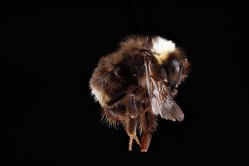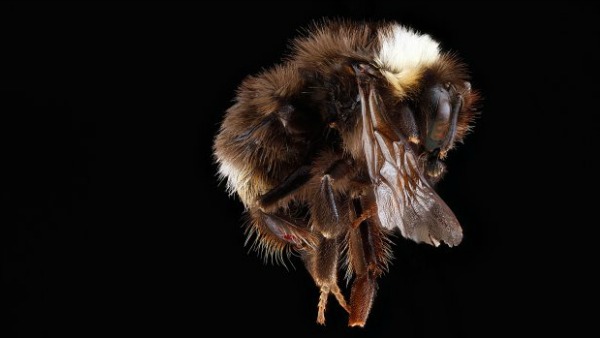
USGS Native Bee Inventory and Monitoring LaboratoryThe Western bumblebee, or Bombus occidentalis.
A once-common bumblebee species that all but disappeared over the past 20 years has been glimpsed in Washington state for the first time since the mid-90s, getting local bee fans as excited as if they’d spotted Sasquatch. Though it doesn’t quite make up for the 50,000 bumblebees that met their demise in an Oregon parking lot last month, positive bee news is rare enough these days that we’ll take any excuse to celebrate.
The Western bumblebee, or Bombus occidentalis, an accomplished pollinator of greenhouse tomatoes and cranberries, is distinguishable by its “white butt,” says Will Peterman, a self-described “bee nerd” who caught the elusive insect on camera in a park north of Seattle.
The first sighting in more than a decade came from Brier resident Megan O’Donald, who spotted one of the bees in her mother’s garden last summer and reported it to the Xerces Society [for Invertebrate Conservation.]. The insects returned this year, and O’Donald said she saw one Sunday on a goldenrod plant.
When Peterman heard about the earlier sightings, he decided to launch a bee-hunting expedition. Using Google Earth, he identified several patches of likely habitat — mostly small parks or unmown lots. At the fourth site on his list, he got lucky.
The colony, which is located underground, may be shutting down for the season. In late summer, after the broods are raised, the bees that will develop into the next season’s queens start gorging on nectar in preparation for their winter hibernation.
“Probably all we can do now is let the bees continue their cycle and go back next spring,” said UW biology instructor Evan Sugden, who joined the hunt on Sunday.
Sugden, Peterman, and other biologists and bee enthusiasts scoured the area where Peterman had snapped his photo, hoping to find a nest. No such luck, but they spotted a queen and got “scads more pictures,” according to Peterman, of what may be the only population of Western bumblebees in the state.
According to a 2012 study in Northwest Science, Bombus occidentalis and three other Bombus species, once prevalent from British Columbia to California, have experienced “dramatic declines in population abundance, geographic range and genetic diversity.” Experts theorize that their downfall relates to commercial bumblebee-breeding programs, some of which sold colonies to European tomato farmers. The Seattle Times explains:
Scientists at the University of California, Davis hypothesize that some of the bees shipped to Europe picked up a gut parasite called Nosema bombi. When infected queens were shipped back to the U.S., the infection could have spread quickly through bumblebee populations with no native immunity.
Bees are also vulnerable to a wide range of pesticides.
It could be that the bees seen last weekend actually have a resistance to N. bombi or whichever parasite may have destroyed Western bumblebee populations in the first place. Or maybe they just escaped the scourge somehow. Either way, the Xerces Society’s Rich Hatfield told The Seattle Times that this discovery presents an opportunity to conserve and even rebuild the population.



